Looking at processes in Windows Task Manager is something that most DBAs have done many times. The need to do this hasn’t changed, however what has changed is how we can get information on the processes.
Prior to Azure Data Studio we would go to Task Manager in Windows. Task Manager will look something like this. You can see the name of the process, user name, PID number as well as CPU and memory utilization.
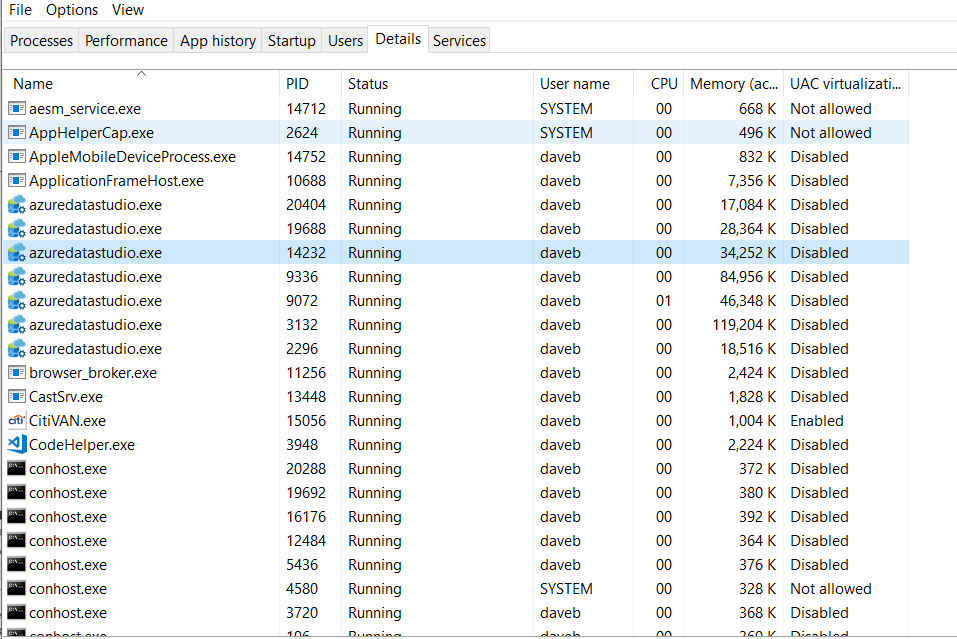
Azure Data Studio offers the ability to view these same processes, however the processes returned focus on Azure Data Studio related processes.
To open Process Explorer, go to the Help menu item and it is in that menu. Just as in the image below.
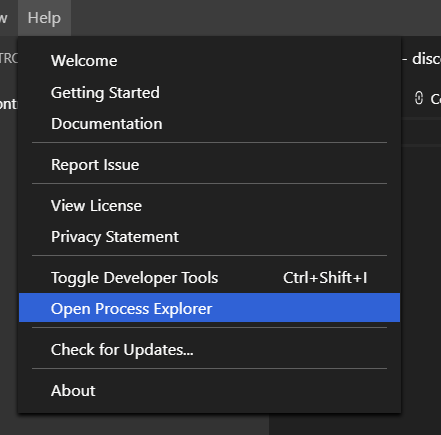
Once open you will see familiar columns. These columns include, CPU%, Memory(MB), pid and Name. These are all Azure Data Studio related processes.

When you right click on one of the processes, you will see a somewhat familiar pop up menu. The menu item will allow us to terminate the process, just as we have done many times in Task Manager.
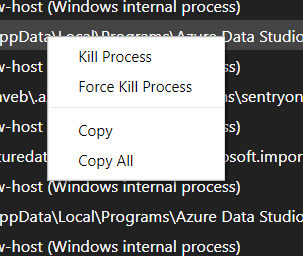
This pop up menu is significantly smaller. The task manager pop up has a ton more options including change priority and affinity. Below is what you will see in the pop up menu in Task Manager.
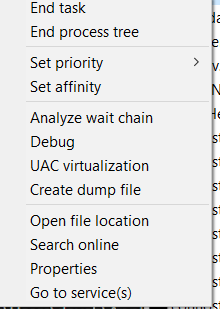
Looking at the image below, the left side is Azure Data Studio and the right is Windows Task Manager. The important thing to note here is that in order to map the process to a process in Task Manager, the match will happen on the Pid column, as seen below.
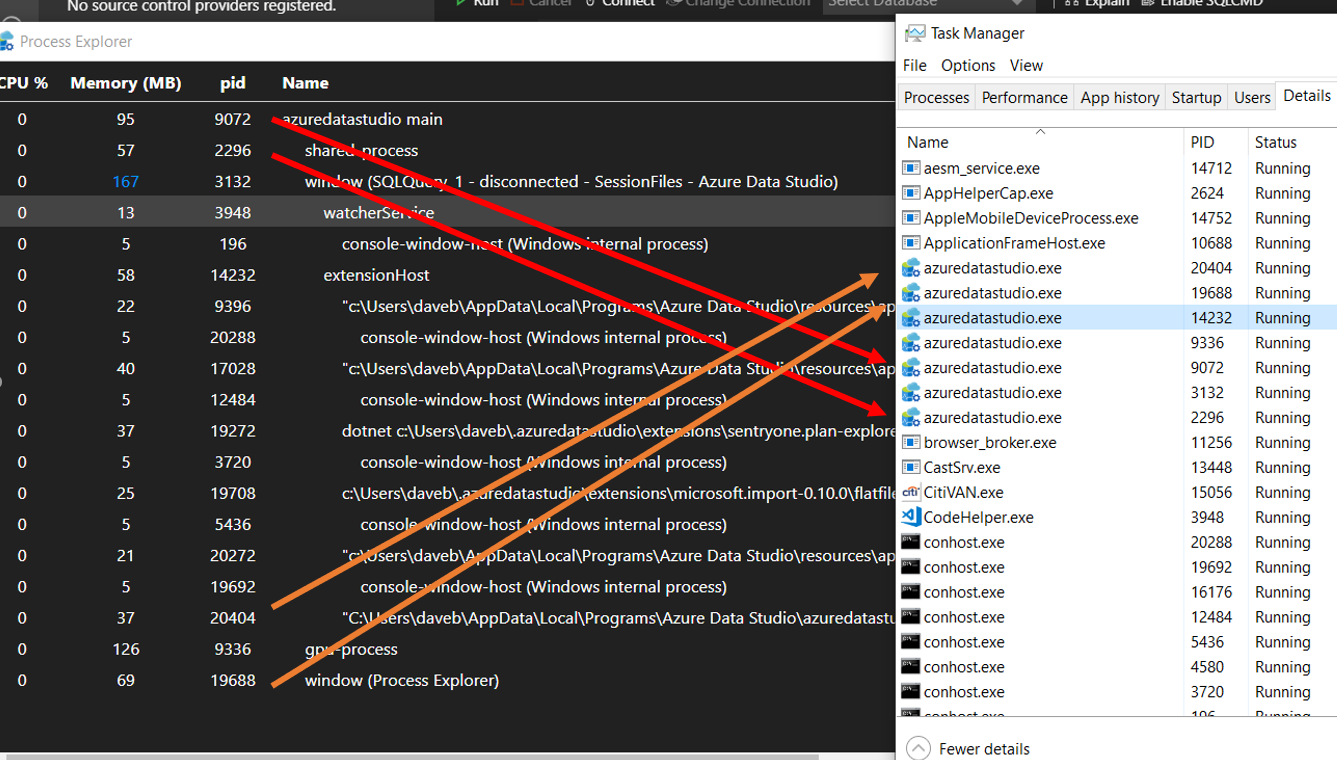
Notice that the pids all point to the azuredatestudio.exe processes. Azure Data Studio provides just a bit more information than Task Manager. Please be careful changing the state of a service. In other words, be careful stopping a process unless it is a last restore approach to fixing an issue.
In Task Manager the sort order for a column can easily be change. You will need to put in just a bit of effort into determining what the proper sort order is. When looking at the data in Process Explorer, the data cannot be sorted in any way. It looks like it is sorted by CPU in descending order.
This is a pretty short blog, but I think it is a good idea to know thqt Process Explorer exists. I really like that I can stay in the same tool and review related processes.
Thanks for visiting my blog!!!